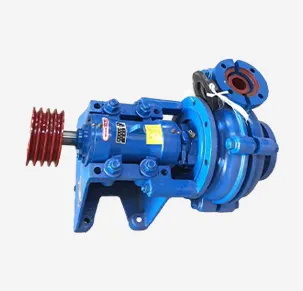English
- Afrikaans
- Albanian
- Amharic
- Arabic
- Armenian
- Azerbaijani
- Basque
- Belarusian
- Bengali
- Bosnian
- Bulgarian
- Catalan
- Cebuano
- Corsican
- Croatian
- Czech
- Danish
- Dutch
- English
- Esperanto
- Estonian
- Finnish
- French
- Frisian
- Galician
- Georgian
- German
- Greek
- Gujarati
- Haitian Creole
- hausa
- hawaiian
- Hebrew
- Hindi
- Miao
- Hungarian
- Icelandic
- igbo
- Indonesian
- irish
- Italian
- Japanese
- Javanese
- Kannada
- kazakh
- Khmer
- Rwandese
- Korean
- Kurdish
- Kyrgyz
- Lao
- Latin
- Latvian
- Lithuanian
- Luxembourgish
- Macedonian
- Malgashi
- Malay
- Malayalam
- Maltese
- Maori
- Marathi
- Mongolian
- Myanmar
- Nepali
- Norwegian
- Norwegian
- Occitan
- Pashto
- Persian
- Polish
- Portuguese
- Punjabi
- Romanian
- Russian
- Samoan
- Scottish Gaelic
- Serbian
- Sesotho
- Shona
- Sindhi
- Sinhala
- Slovak
- Slovenian
- Somali
- Spanish
- Sundanese
- Swahili
- Swedish
- Tagalog
- Tajik
- Tamil
- Tatar
- Telugu
- Thai
- Turkish
- Turkmen
- Ukrainian
- Urdu
- Uighur
- Uzbek
- Vietnamese
- Welsh
- Bantu
- Yiddish
- Yoruba
- Zulu
Telephone: +86 13120555503
Email: frank@cypump.com
Aug . 30, 2024 17:25 Back to list
Double Action Suction Pump
Design and Functionality of a Double Action Suction Pump
Double action suction pumps stand out in the realm of fluid mechanics due to their efficient design and remarkable functionality. These pumps are engineered to alternate between suction and discharge strokes, allowing fluid to be drawn in and expelled simultaneously, which significantly enhances their performance compared to single action pumps. This article delves into the essential design features and operational principles that make double action suction pumps indispensable in various applications.
At the core of a double action suction pump's design is its two-cylinder structure. Each cylinder undergoes a suction and discharge process in tandem, effectively doubling the flow rate when compared to single action systems. This unique configuration not only promotes greater efficiency but also minimizes the fluctuations in flow, resulting in a more consistent and reliable output. The pistons within each cylinder are typically connected to a crankshaft that facilitates their reciprocal motion, thus enabling the simultaneous suction and discharge cycles.
The materials used in the construction of these pumps are critical to their performance and longevity. Given that they often handle corrosive or abrasive fluids, the use of high-grade materials such as stainless steel or specially coated alloys is common. These materials resist wear and corrosion, ensuring that the pump maintains its integrity and efficiency over time. Furthermore, attention to detail in the sealing mechanisms is vital, as effective seals prevent leakage and maintain optimal pressure within the system.
design and functionality of a double action suction pump for ...

Operationally, the double action suction pump uses a combination of mechanical motion and pressure differentials to transport fluids. As one piston moves down to create a vacuum in its cylinder, the corresponding piston in the opposite cylinder moves up, pushing the fluid out. This simultaneous action is what sets double action pumps apart; while one side is drawing in fluid, the other is expelling it, leading to a consistent flow rate that is sought after in many industrial processes.
Applications for double action suction pumps are extensive. They are commonly employed in industries such as wastewater management, mining, and chemical processing, where the need for reliable and efficient fluid transfer is paramount. Their ability to handle varying viscosities and solid-laden fluids makes them particularly valuable in these settings. Additionally, these pumps are often favored in firefighting and irrigation systems, where quick and efficient water transfer is essential.
In conclusion, the design and functionality of double action suction pumps illustrate a harmonious blend of engineering precision and practical application. With their ability to provide consistent flow rates and manage demanding fluid environments, they are an essential component in many industrial systems. As technology continues to advance, enhancements in materials and design are likely to further improve their efficiency and versatility, ensuring their relevance in fluid dynamics for years to come.
-
ISG Series Vertical Pipeline Pump - Chi Yuan Pumps Co., LTD.|High Efficiency, Energy Conservation, Low Noise
NewsJul.29,2025
-
ISG Series Vertical Pipeline Pump-Chi Yuan Pumps Co., LTD.|High Efficiency&Energy-Saving
NewsJul.29,2025
-
ISG Series Vertical Pipeline Pump - Chi Yuan Pumps Co., LTD. | High Efficiency, Energy-Saving
NewsJul.29,2025
-
ISG Series Pipeline Pump - Chi Yuan Pumps | High Efficiency, Low Noise
NewsJul.29,2025
-
High-Efficiency Vertical Slurry Pumps for Mining & Industry Solutions
NewsJul.29,2025
-
High-Efficiency Pipeline Pump Solutions for Every Pipeline Pump Station
NewsJul.29,2025










